If you have ever walked past a full cycling class or ridden a SPIN® Bike from Mad Dogg Athletics, then you can relate to the distinct sound an indoor cycling bike produces when it is being ridden. The sound heard is that of the rotating flywheel. The flywheel is one of the essential components of an indoor cycling bike.
You may wonder, “what flywheel weight do I need?”…
Below, we will examine the importance of the flywheel, how they vary, and what to keep in mind to find the best option for yourself.
Check out our video with everything you need to know about the flywheel weight of a spin bike!
What Is a Flywheel & What Does on a Spin Bike?
The flywheel refers to the weighted wheel located at the front or the back of the bike. This wheel rotates when the pedals begin to turn. It connects to the pedals through either a belt or chain drive. The flywheel helps to build momentum.
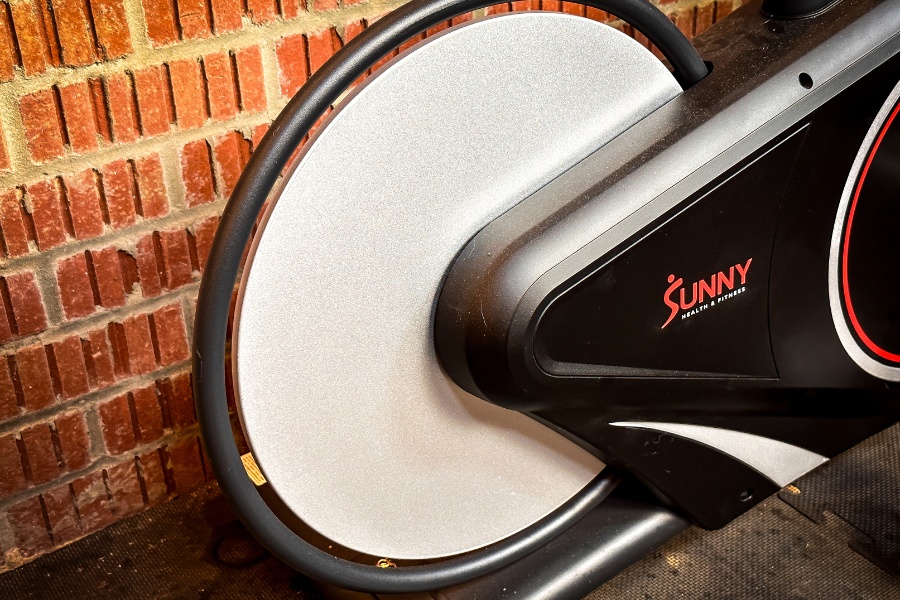
Flywheels can vary significantly in size, weight, and weight distribution. They range from some of the lightest weighing a mere 8lbs and the heaviest almost 50lbs. The weight distribution within the flywheel might also differ. Perimeter-weighted flywheels distribute the weight of the flywheel to the outermost part of the wheel, or perimeter. Others that have the weight centrally located within the wheel and are called Centered-Weighted flywheels.
The flywheel also plays a vital role in adding and removing resistance during the ride. If a bike uses an electromagnetic resistance system, magnets move closer or farther away from the flywheel to increase or decrease resistance. Other bikes use a friction braking system in which felt fabric pads apply tension to the wheel to adjust resistance. The flywheel is an essential component of an indoor cycling bike.
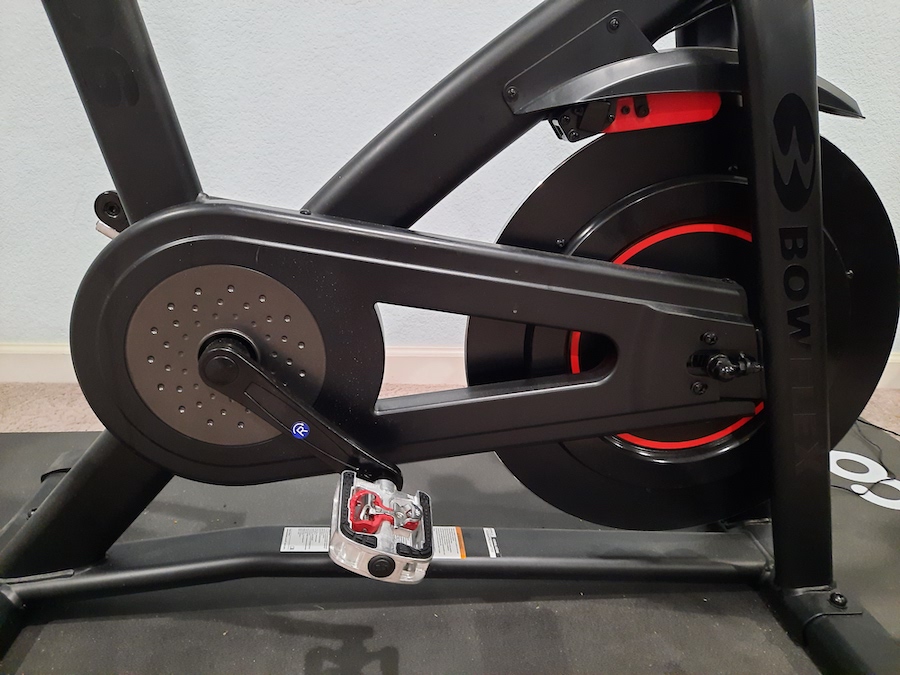
Does the Weight of the Flywheel Matter?
So, what is a good flywheel weight? Does it really matter?
The flywheel’s weight is vital because it is a deciding factor in what type of ride the bike provides. Usually, indoor cycling bikes that have a heavier flywheel produce a smoother ride. Often cycles with a lighter flywheel make a jerky pedal stroke and can be harder on joints. But this is not always true, and we will examine this in detail in a moment.
Heavy vs Light Flywheel Spin Bikes Comparison
There are two different philosophies on how momentum is created with a flywheel. One philosophy includes creating a heavier flywheel to drive momentum; the other involves increasing the rate at which the flywheel turns. Below we will discuss the advantages and disadvantages of having a heavy or light flywheel.
Heavy Flywheel
If you enjoy road biking, then a heavier flywheel might be more appealing to you as it offers the closest experience to riding a road bike. Flywheels in this category often weigh between thirty to fifty pounds and are usually located at the bike’s front.
They are often associated with a smoother ride. Momentum is quickly built with a heavier flywheel. The bike’s resistance is easy to increase once momentum has been created without disrupting the pedal stroke. Riders also find that speed is easier to maintain. A heavy flywheel requires a significant initial amount of effort to reach a desired cadence. As a flywheel creeps closer to the higher end of the weight range, it becomes increasingly taxing on joints to initiate motion. Bigger is not always better when it comes to the weight in this category.
Due to the flywheel’s weight in conjunction with the rest of the bike, it can be more challenging to move this piece of equipment. Often a heavier flywheel requires additional belt maintenance and can be harder on the bearings.
| Advantages | Disadvantages |
|---|---|
| Smoother ride | Harder to move within your fitness space |
| Mimics the feeling of riding a road bike | Frequent maintenance may be required |
| Greater initial effort is needed to start pedaling |
Light Flywheel
A light flywheel has been associated with a rougher ride than that of a heavier wheel in the past. If a flywheel is too lightweight, then the ride can feel jerky, and the pedal stroke becomes uneven. An uneven pedal stroke can be damaging to joints. If momentum is unable to be maintained, then the rider is continually trying to adjust their speed. For a light flywheel to be effective and build momentum properly, it must spin at a much faster rate than that of the pedal stroke. The fastest spinning flywheel on the market is the Keiser M3i, which spins eleven times faster than the pedal stroke. The Keiser M3i is also at the higher end of the price range than various options that include a heavier flywheel. Another company that is also trying to follow Keiser’s footprints but is more affordable is Sunny Health & Fitness.
Since a lighter flywheel’s weight can be significantly lighter than its heavier flywheel counterparts, it allows this bike to be easily moved. A lightweight flywheel also requires less maintenance on its belts due to lower wear and tear.
| Advantages | Disadvantages |
|---|---|
| Easier to move within fitness space | More expensive for a quality option |
| Less maintenance | Smoothness of ride may be affected |
| Momentum quickly builds | Harder on joints depending on bike |
| More affordable |
Front vs Rear Flywheel Positioning Comparison
As technology continues to expand, the design of the traditional indoor cycling bike is as well. In the past, high-end bikes were designed with the flywheel in the front position of the cycle. Today, new bikes are emerging on the market that include a rear flywheel. Both options have advantages and disadvantages.
Front Flywheel
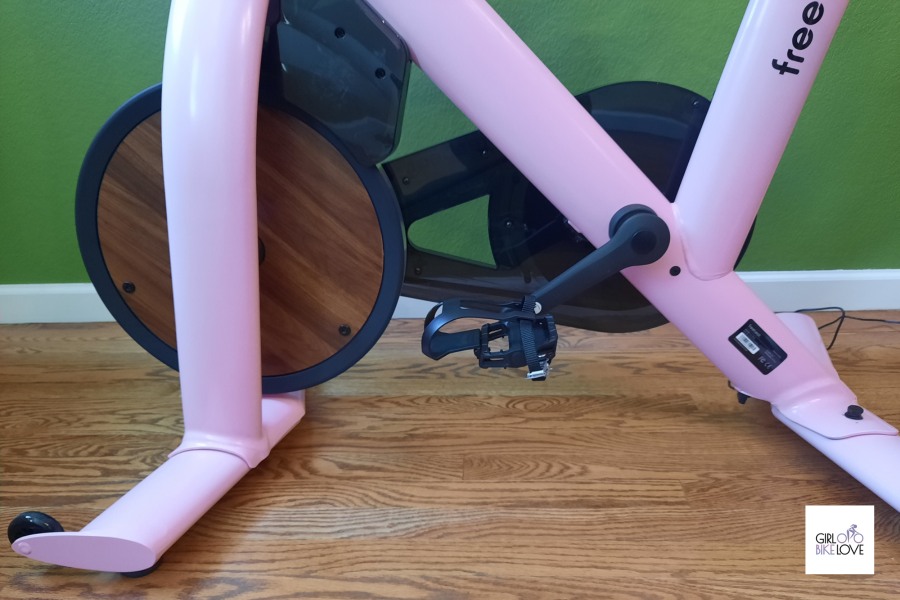
A front flywheel is located at the front of an indoor cycling bike. Many manufacturers produce bikes that contain the front flywheel. One of the most known and respected indoor cycling brands on the market is Mad Dogg Athletics, the creator of Spinning® and the original Spinner® bikes. They have been the industry standard for years, and their sleek design has always included a heavier front flywheel. One of the main advantages of a front flywheel is that it offers more stability for riders, especially when climbing out of the saddle. The most considerable drawback of this flywheel placement is that it is located in what is known as the “sweat zone,” which increases the chance for sweat erosion.
Rear Flywheel
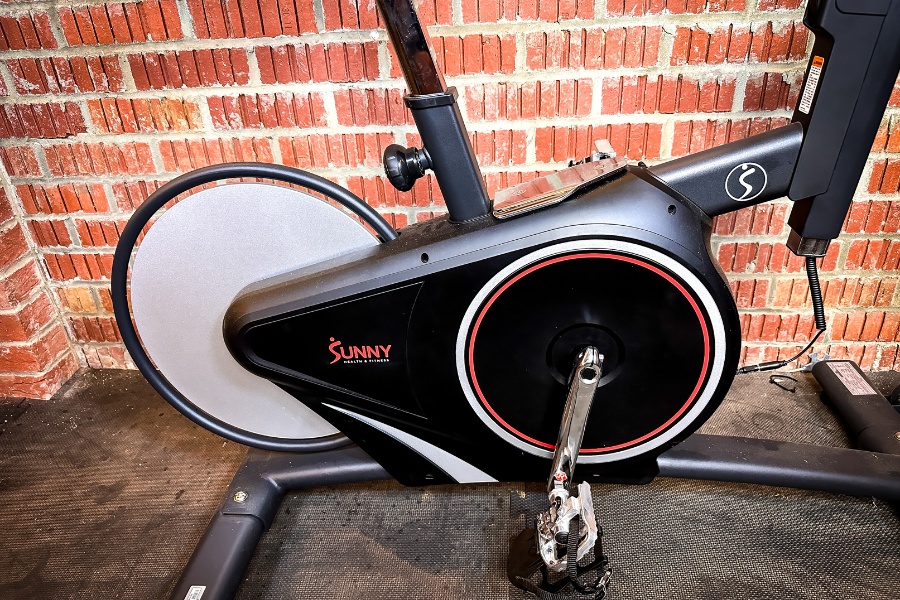
A rear flywheel is positioned at the back of the bike behind the pedals. Unlike the typical design of heavier front flywheels, a rear flywheel is usually significantly lighter. For example, the Keiser M3i is one of the most highly-rated bikes on the market; this bike includes a rear flywheel that weighs only eight pounds. One advantage of having a rear flywheel is that it requires less maintenance due to its protection from the “sweat zone.” Besides, we also tried the SF-B1709, a budget rear-flywheel spin bike of Sunny Health, and found it also excellent
One drawback is that it takes longer to become accustomed to how the bikes feel if used to a front flywheel cycling bike.
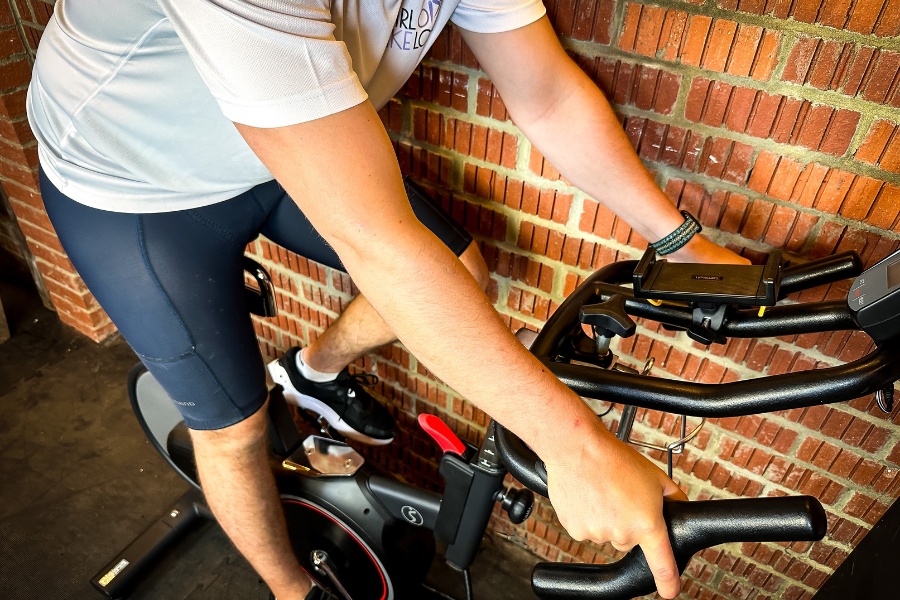
What Is the Right Flywheel Weight for Me?
There is not a straightforward answer to what the ideal flywheel weight will be for every person. This decision will vary depending on what you want from your bike with performance and price in mind.
Bike Setup & Pedalling Technique
Bicycling.com shares great advice for the right pedaling technique: “Picture-perfect pedaling is more than pushing down on the pedals. It also involves pulling them up and around in an act that cyclists call pedaling circles. Ultimately, the goal is to eliminate any “dead spots” in your pedal stroke—at no point in each pedal stroke should your legs just be coming along for the ride“
Another crucial factor is the bike set-up process and especially how to get on the bike and place your feet in either the clips or toe cages, depending on the type of shoe you plan to use. The knee of the leg in the bottom pedal position should contain a 25-30% bend. This bend will allow you to continue to pedal through the ball of your foot without any pointing at the bottom of the pedal stroke.
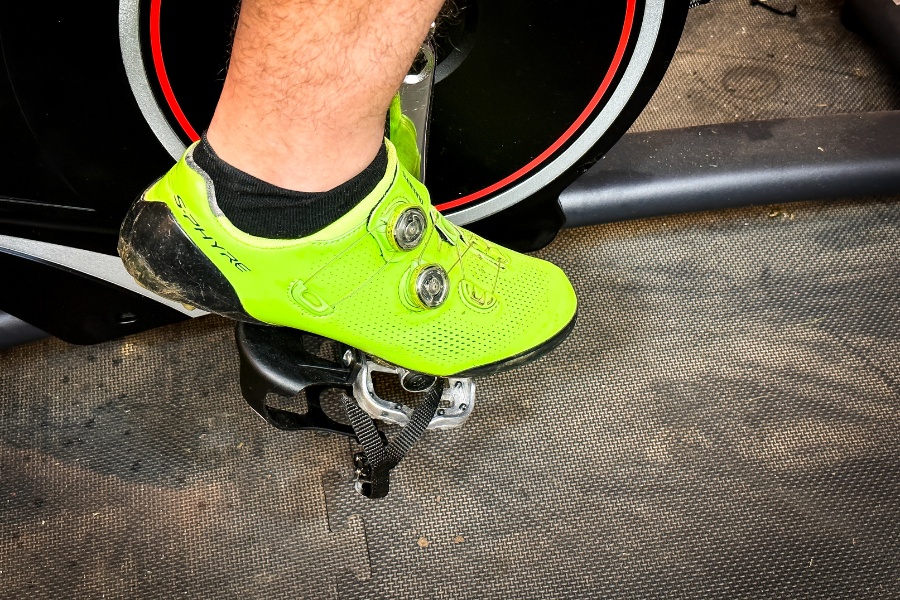
FAQ
- Is a heavier flywheel (always) better?
It depends on the type and brand of bike you are looking at purchasing. If you are looking for a bike that includes a front flywheel, it is most likely to have a heavier flywheel. However, there are a few brands where this would not apply. - Does flywheel weight matter with magnetic resistance?
Yes, flywheel weight continues to matter with magnetic resistance. Depending on the bike model, other factors play a role in how the bike performs, as discussed previously, such as the rate that the flywheel spins for lightweight models. - What is the difference between a Perimeter-Weighted and Center-Weighted Flywheel?
A Perimeter-Weighted flywheel’s weight is along the outside or perimeter of the wheel. This weight distribution assists with momentum. A Center-Weighted Flywheel’s weight is centrally located on the flywheel and provides superior weight distribution, making it easier on joints. - Is a 6kg & 9kg flywheel enough?
It depends on the bike model and how it works. For example, the 8lbs flywheel of the Keiser M3i is more than adequate. In most front-flywheel models, you should go for a heavier flywheel. - What is the peloton flywheel weight?
The official site doesn’t include this specification, but from sources that used the bike, it seems like it weighs 38lbs.
Bottom Line
There are many different factors to consider when selecting the right flywheel for you. Finding an opportunity to try various bike options will give you a better perspective on the features that appeal most to you.
